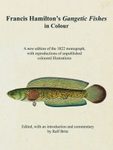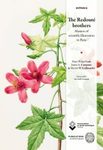![Les Années Folles de l'Ethnographie: Trocadéro 28-37 [The Roaring Twenties of Ethnography: Trocadero 28-37] Les Années Folles de l'Ethnographie: Trocadéro 28-37 [The Roaring Twenties of Ethnography: Trocadero 28-37]]()
Click to have a closer look
About this book
Customer reviews
Related titles
About this book
Language: French
Les Années Folles de l’Ethnographie describes an exciting period in the history of culture and science: the last ten years of the Trocadéro Museum of Ethnography before it was destroyed to make way for the Musée de l'Homme, inaugurated in 1938. Directed from 1928 by Paul Rivet and Georges Henri Rivière who sealed an unprecedented alliance between science and culture, the museum underwent a profound modernization at a time when the recognition of "primitive arts" questioned the role of an ethnographic museum. This is the beginning of the Roaring Twenties of Ethnography, which reveals the craze for the discipline of ethnology. Entering the era of communication and advertising, the museum wanted to be the showcase. Thanks to Rivet and Rivière, ethnology was just as much part of culture (modern, western, French) as it was cultural, not studying "primitive races" or "archaic peoples", but cultures (traditional, exotic) that it proposed to describe and understand, and with the ambition to reveal their logic and the symbolism, and the laws by which they operated – a proposal that was borderline provocative in a French society that was steeped in a cult of empire and the civilizing missions France undertook abroad towards marginalized peoples.
Summary in French:
Les Années Folles de l’Ethnographie relate une séquence passionnante de l’histoire de la culture et des sciences: les dix dernières années du Musée d’ethnographie du Trocadéro avant qu’il ne soit détruit pour laisser la place au Musée de l’Homme, inauguré en 1938. Dirigé à partir de 1928 par Paul Rivet et Georges Henri Rivière qui scellent une alliance inédite entre la science et la culture, le musée connaît une profonde modernisation à une époque où la reconnaissance des «arts primitifs» interroge le rôle même d’un musée d’ethnographie. C’est le début des Années folles de l’ethnographie qui révèlent l’engouement pour une discipline, l’ethnologie. Entrant dans l’ère de la communication et de la publicité, le musée veut en être la vitrine. Grâce à Rivet et Rivière, l’ethnologie est tout autant dans la culture (moderne, occidentale, française) qu’elle se veut culturelle, en étudiant non plus des «races primitives», des «peuples archaïques», mais des cultures (traditionnelles, exotiques) qu’elle se propose de décrire et comprendre, dont elle ambitionne de révéler la logique et la symbolique propres, les lois de fonctionnement – proposition à la limite de la provocation dans une société française éduquée dans le culte de l’empire et de la mission civilisatrice de la France envers des peuples marginalisés.
Customer Reviews





![Les Années Folles de l'Ethnographie: Trocadéro 28-37 [The Roaring Twenties of Ethnography: Trocadero 28-37] Les Années Folles de l'Ethnographie: Trocadéro 28-37 [The Roaring Twenties of Ethnography: Trocadero 28-37]](http://mediacdn.nhbs.com/jackets/jackets_resizer_xlarge/23/239722.jpg?height=620)
![Les Années Folles de l'Ethnographie: Trocadéro 28-37 [The Roaring Twenties of Ethnography: Trocadero 28-37]](http://mediacdn.nhbs.com/jackets/jackets_resizer/23/239722.jpg)




![La République Naturaliste: Collection d'Histoire Naturelle & Révolution Française (1789-1804) [The Naturalist Republic: Natural History Collecting and the French Revolution (1789-1804)]](http://mediacdn.nhbs.com/jackets/jackets_resizer_medium/22/220175.jpg?height=150&width=119)
![Exposer l'Humanité: Race, Ethnologie et Empire en France (1850-1950) [Exhibiting Humanity: Race, Ethnology and Empire in France (1850-1950)]](http://mediacdn.nhbs.com/jackets/jackets_resizer_medium/22/226791.jpg?height=150&width=105)
![Genèse d'une Découverte: La Division des Infusoires (1765-1766) [Genesis of a Discovery: The Division of Infusories (1765-1766)]](http://mediacdn.nhbs.com/jackets/jackets_resizer_medium/23/233514.jpg?height=150&width=108)
![Les Années Folles de l'Ethnographie: Trocadéro 28-37 [The Roaring Twenties of Ethnography: Trocadero 28-37]](http://mediacdn.nhbs.com/jackets/jackets_resizer_medium/23/239722.jpg?height=150&width=103)
![Auguste de Saint-Hilaire (1779-1853): Un Botaniste Français au Brésil / Um Botânico Francês no Brasil [A French Botanist in Brazil]](http://mediacdn.nhbs.com/jackets/jackets_resizer_medium/22/228866.jpg?height=150&width=104)





![Missions du Musée de l'Homme en Estonie: Boris Vildé et Léonide Zouroff au Setomaa (1937-1938) [Missions of the Musée de l'Homme in Estonia: Boris Vildé and Léonide Zouroff in Setomaa (1937-1938)]](http://mediacdn.nhbs.com/jackets/jackets_resizer_medium/23/236564.jpg?height=150&width=103)














![Antoine-Laurent de Jussieu (1748-1836): Fabrique d'une Science Botanique [Production of Botanical Science]](http://mediacdn.nhbs.com/jackets/jackets_resizer_medium/25/259747.jpg?height=150&width=103)
![Les Chauves-Souris de Guyane [The Bats of French Guiana]](http://mediacdn.nhbs.com/jackets/jackets_resizer_medium/13/134247.jpg?height=150&width=100)



![Enraciner l’Empire: Une Autre Histoire du Jardin Botanique de Calcutta (1860-1910) [Grounding the Empire: Another Story of the Calcutta Botanical Garden (1860-1910)]](http://mediacdn.nhbs.com/jackets/jackets_resizer_medium/25/255857.jpg?height=150&width=103)

![Atlas des Mammifères Sauvages de France, Volume 3: Carnivores et Primates [Atlas of Wild Mammals of France, Volume 3: Carnivores and Primates]](http://mediacdn.nhbs.com/jackets/jackets_resizer_medium/26/263780.jpg?height=150&width=106)
![Flora of Cambodia, Laos and Vietnam, Volume 36 [Faune et Flore Tropicales, Volume 47]](http://mediacdn.nhbs.com/jackets/jackets_resizer_medium/24/245033.jpg?height=150&width=101)
